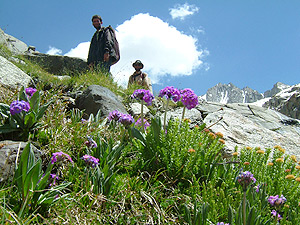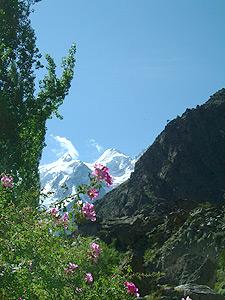Service & Area
Quick Links
Afghanistan Flora & Fauna
 The country has been at war for many years and has suffered tremendous environmental damage and destruction. Afghanistan has an extreme continental, arid climate where plant life is sparse , in the north it is dry treeless steppes in the south desert .
The country has been at war for many years and has suffered tremendous environmental damage and destruction. Afghanistan has an extreme continental, arid climate where plant life is sparse , in the north it is dry treeless steppes in the south desert .
With low rainfall, the monsoon rains depleting by the time they reach Afghanistan a major part of the precipitation is snow. Common trees in the mountains are deodar, oaks and wild olive in Kunar, Nuristan and Paktia provinces, with poplars, wild hazelnuts, almonds, and pistachios is different areas. Common plants in the arid regions are camel thorn, locoweed, spiny restharrow, mimosa, and wormwood, a variety of sagebrush. There are a number of medicinal plants like rue, wormwood, and asafetida
 Among the animals of this desolate land are the world’s largest cattle Bos Ursus torquatus or yak, the world’s largest sheep (Ovis Poli) the Marco Polo, whose horns are often more than five feet from tip to tip. These creature grow to vast size to counter the cold, for it is the largest animals, who have the smallest surface area in proportion to their mass, that lose body heat the least rapidly. The Marco Polo habitats the Wakhjir , the little and big Pamir region. We have sited small herds in our explorations of this area. They are gregarious species generally congregating in herds of a dozen . Outside of the rutting season mature rams live in small bands of three to five. While the herds sited in summer consist of females and young males. The Kabul Markhor now extinct in Pakistan has still survived in the mountain regions of Afghanistan so has the Kashmir Markhor in the Nuristan and Badkshan region. Other endangered animals are goitered gazelle and Bactrian deer. Besides these there are foxes, hyenas, jackals, and mongooses. Wild boar, hedgehogs, shrews, hares, mouse hares, bats, and various rodents.
Among the animals of this desolate land are the world’s largest cattle Bos Ursus torquatus or yak, the world’s largest sheep (Ovis Poli) the Marco Polo, whose horns are often more than five feet from tip to tip. These creature grow to vast size to counter the cold, for it is the largest animals, who have the smallest surface area in proportion to their mass, that lose body heat the least rapidly. The Marco Polo habitats the Wakhjir , the little and big Pamir region. We have sited small herds in our explorations of this area. They are gregarious species generally congregating in herds of a dozen . Outside of the rutting season mature rams live in small bands of three to five. While the herds sited in summer consist of females and young males. The Kabul Markhor now extinct in Pakistan has still survived in the mountain regions of Afghanistan so has the Kashmir Markhor in the Nuristan and Badkshan region. Other endangered animals are goitered gazelle and Bactrian deer. Besides these there are foxes, hyenas, jackals, and mongooses. Wild boar, hedgehogs, shrews, hares, mouse hares, bats, and various rodents.
 More than 380 bird species are found in Afghanistan, with more than 200 breeding there.
More than 380 bird species are found in Afghanistan, with more than 200 breeding there.
About a 100 species of wildfowl and birds besides Siberian crane, flamingos and falcons cross over from the Siberian route over Afghanistan in their migration to India. A number of lakes in the wakhan corridor like Zor Kol lake Victoria and Chakmaktin are perfect resting places while some ducks also breed here . Other waterway are lake Shiveh in Badkhshan, a few reservoirs and wet lands near Sistan lake on the Iranian border form an extensive habitat for many water birds, which winter here annually. Angling is not developed as a sport so some of the high lakes like lake Dufferin have good brown trout while carp and masher is found in the rivers to the south.
